How the August 2023 Google core update compared to March 2023 core updates
We asked some of the Google tracking data providers for data on the latest Google algorithm update.
Now that the Google August 2023 Core Update is done rolling out, we wanted to take a deeper dive on how this core update differed from previous Google core updates, specifically the March 2023 broad core update. This update was indeed a big one, and caused a lot of ranking volatility across many verticals in the Google search results. But this update was also surrounded by a very volatile set of weeks prior to the update, making the update itself feel a bit more muted than previous updates.
August 2023 core update. As a reminder, the Google August 2023 broad core update started rolling out August 22, 2023, and was completed 16 days later on September 7, 2023.
Data providers on the August 2023 core update
Semrush. Semrush data showed that the August 2023 core update hit a peak of 9.3 in terms of their Semrush Sensor data volatility, which occurred on August 25th, a few days after the update officially started to roll out. When you compare that to the March 2023 core update, that update only reached about 8. Here is a look at the peaks for both updates over the period of time they rolled out:
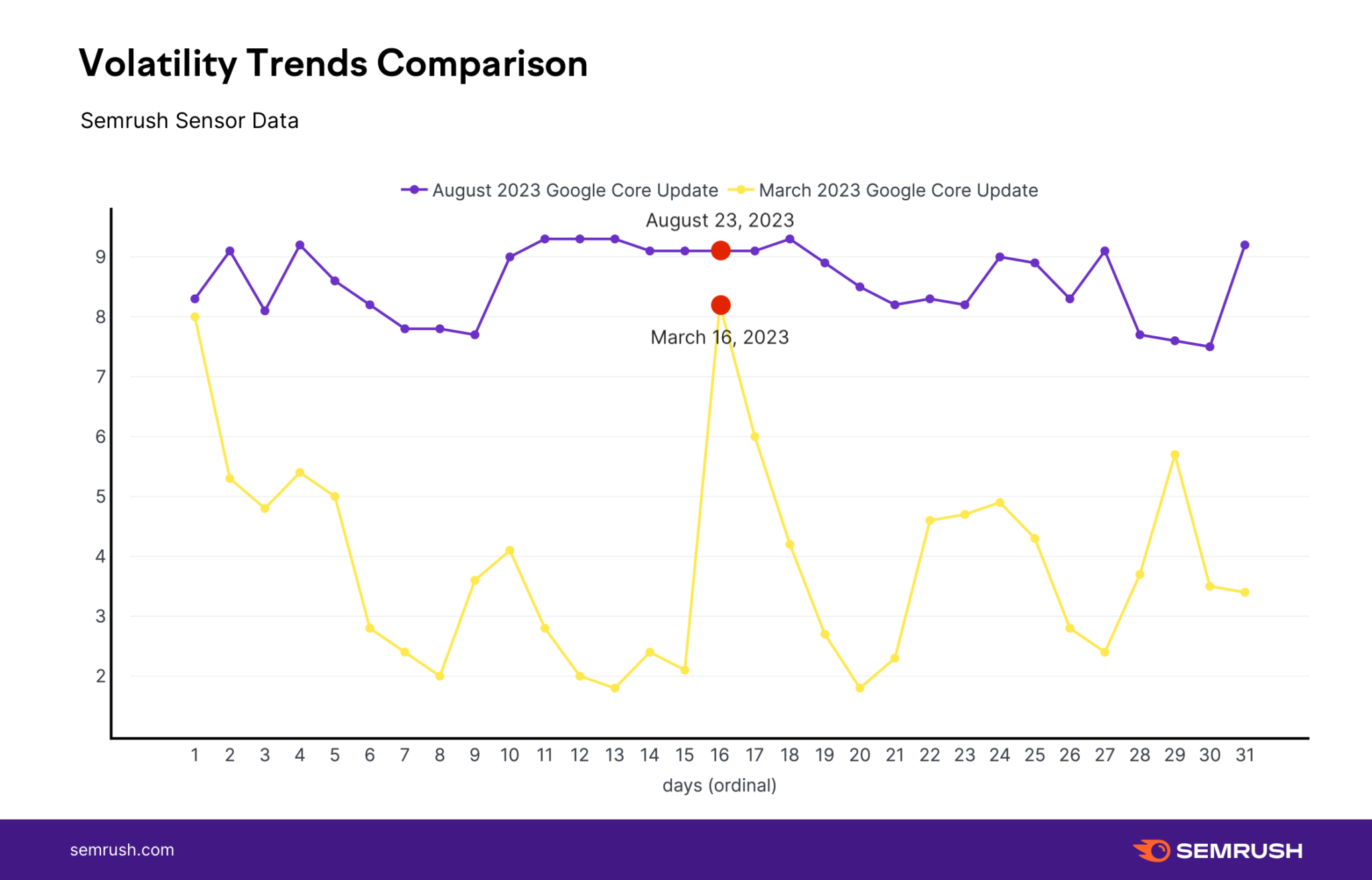
You can clearly see that while the March 2023 core update had wide volatility spikes, the August 2023 core update did not. It was just continuously heated before, during and after the update finished rolling out with some larger peaks on August 25th and on September 7th, the day it completed.
This next graph compares the peak volatility across verticals between the March and August 2023 core updates:
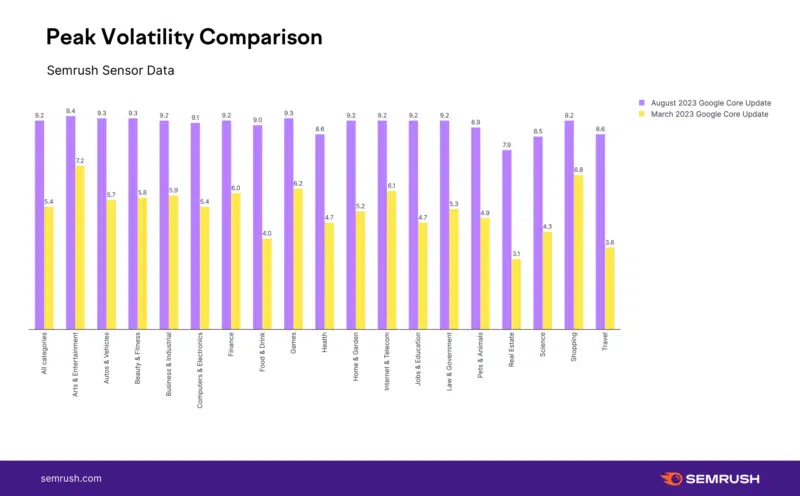
Since Google’s search results have been so volatile it is hard to say which update was more impactful because of the constant volatility. Mordy Oberstein on behalf of Semrush told me, “As compared to pre-update volatility the March 2023 Core Update saw a more significant increase in volatility overall as compared to August. This makes sense when looking at the volatility trends because by the time the August update was officially released rank volatility levels were already quite high. “
This chart shows the overall change by verticle comparing the March to the August core updates:
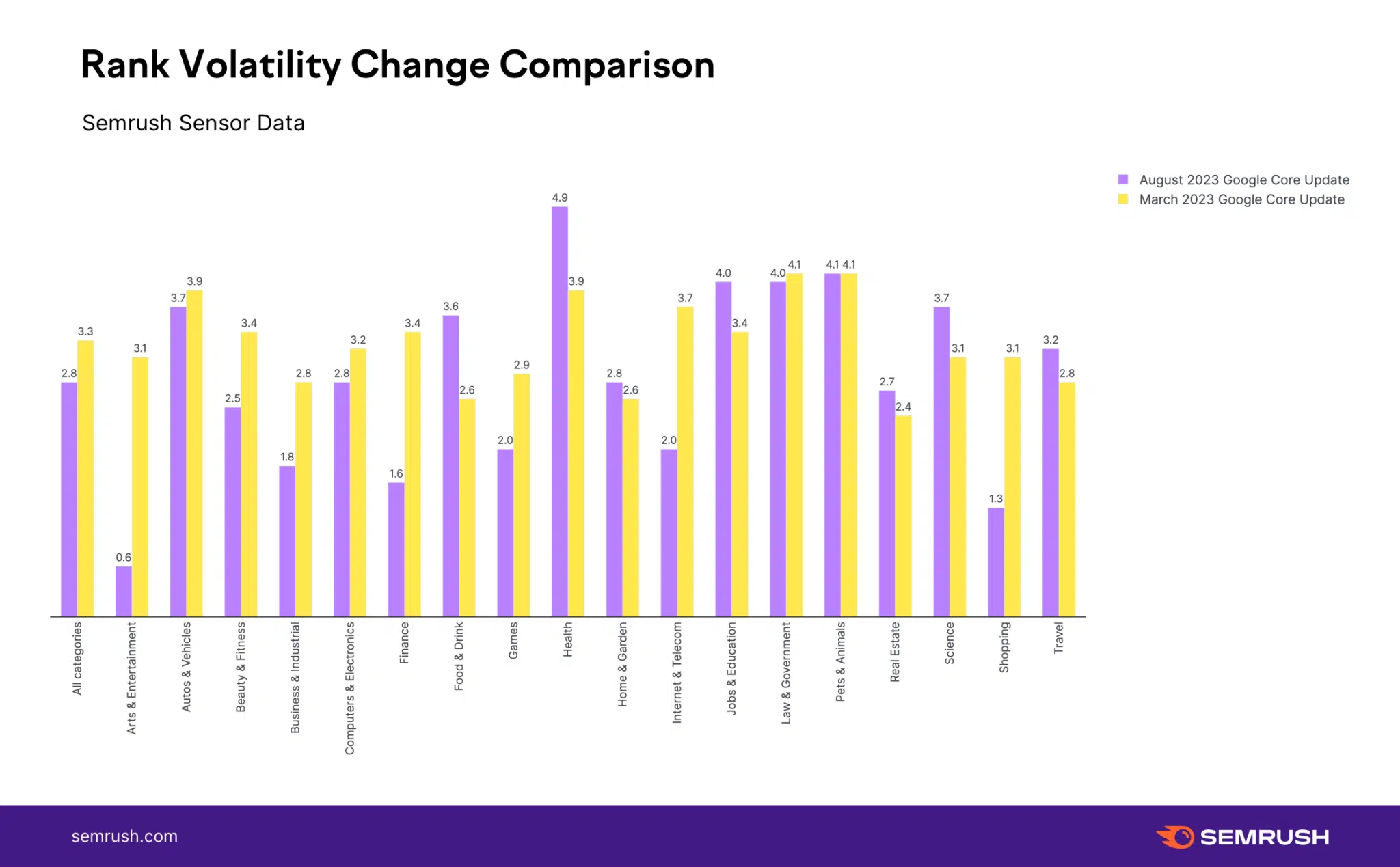
Also there was a noticeable difference in the percentage of URLs now ranking top 10 of the Google search results that were ranking in the twenty or higher position before the update when comparing the March and August 2023 Core Updates:
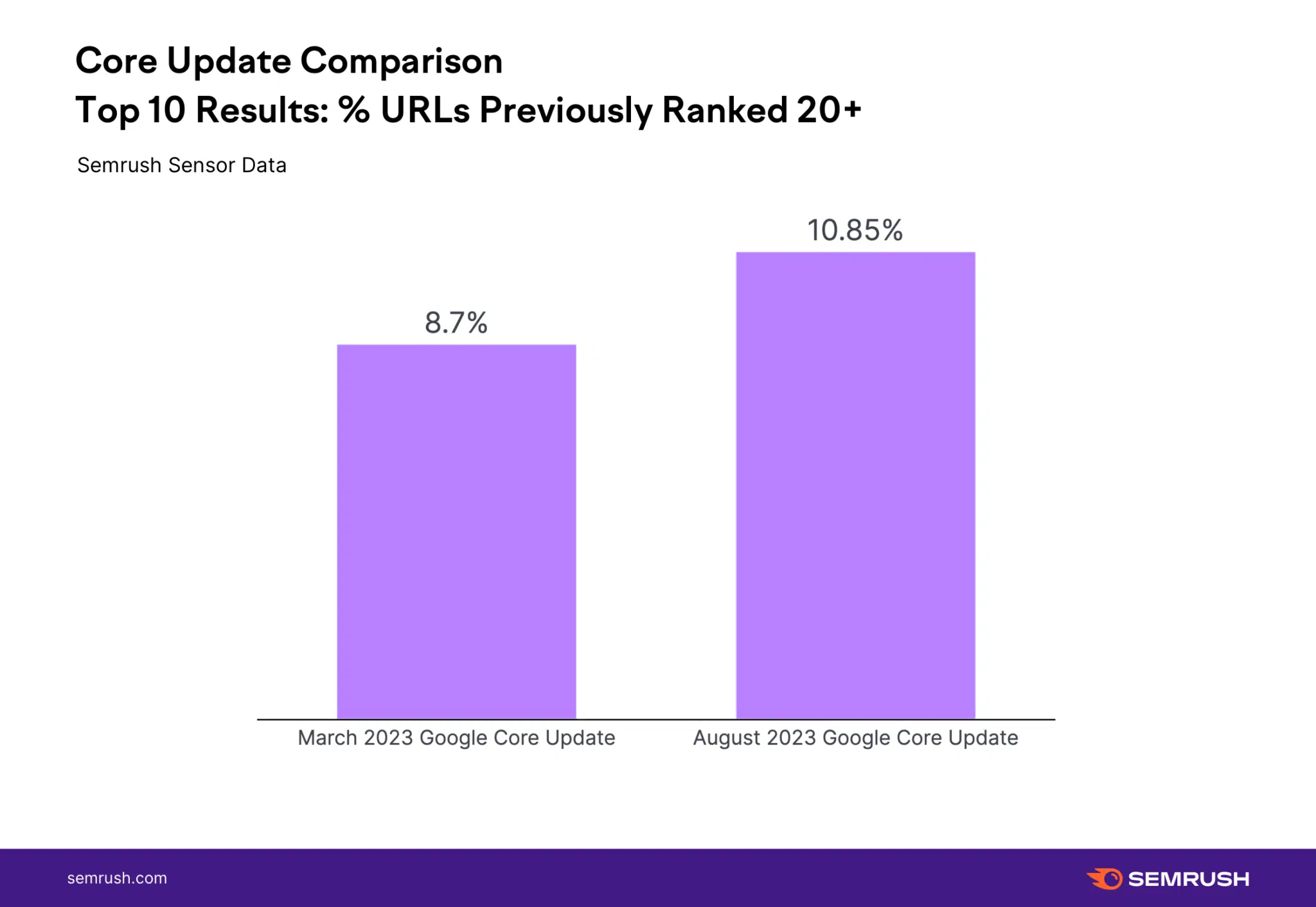
“When you look at it all together it’s a bit of a mixed bag. From a peak volatility point of view, August was more powerful than the March 2023 Core Update,” Mordy Oberstein said. “However, if you look at the increase in rank volatility as compared to the pre-update volatility then the March 2023 Core Update seems more significant. However, even there, as mentioned, more than a few verticals saw more dramatic volatility increases with the most recent update,” he added.
RankRanger. The RankRanger team also sent us data comparing this August 2023 core update to the March 2023 core update. First off, this was a big update, the RankRanger Rank Risk Index showed big volatility on August 25th as well, a few days after the update officially started to roll out:

RankRanger, being a Similarweb company, plotted the average position changes for all the Google core updates since December 2020. When they looked at the average fluctuations for the August update, they saw that it was one of the biggest updates topped only by the June 2021 update, based on position change.
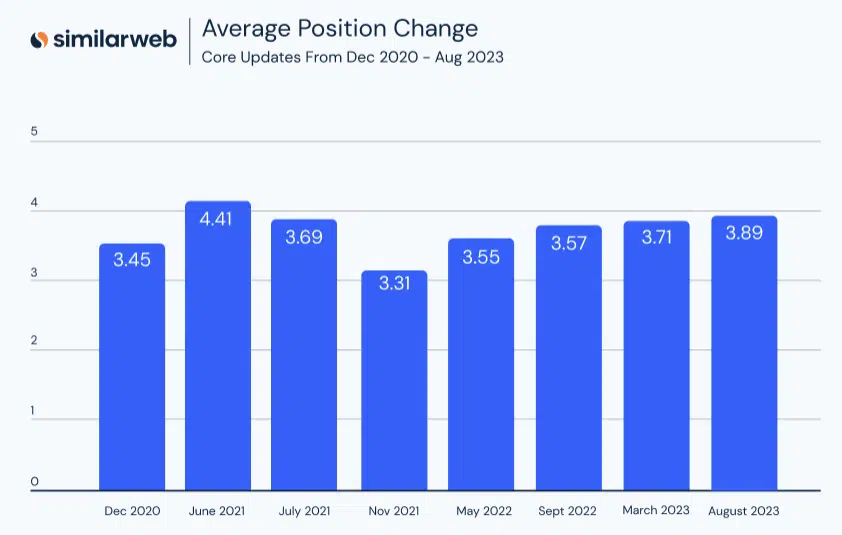
When you compare by position, the March and August update, the August update was more volatile according to the data.
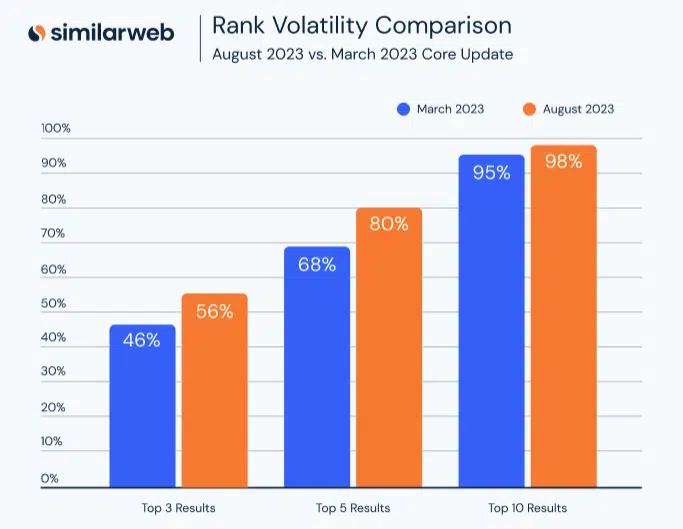
Shay Harel from Similarweb told us, “Comparing different niches, we see the retail niche was hit hardest in the top 3 and top 5 positions, followed by the finance niche. We also see that the health niche saw the lowest fluctuation levels.”
seoClarity. Mark Traphagen from seoClarity shared the seoClarity Rank Fluctuation tracker. This looks at its internal US keyword data. He said, “Interesting we saw a spike to 51% volatility on the final day, which tapered off over the weekend.”
He shared this chart with me:
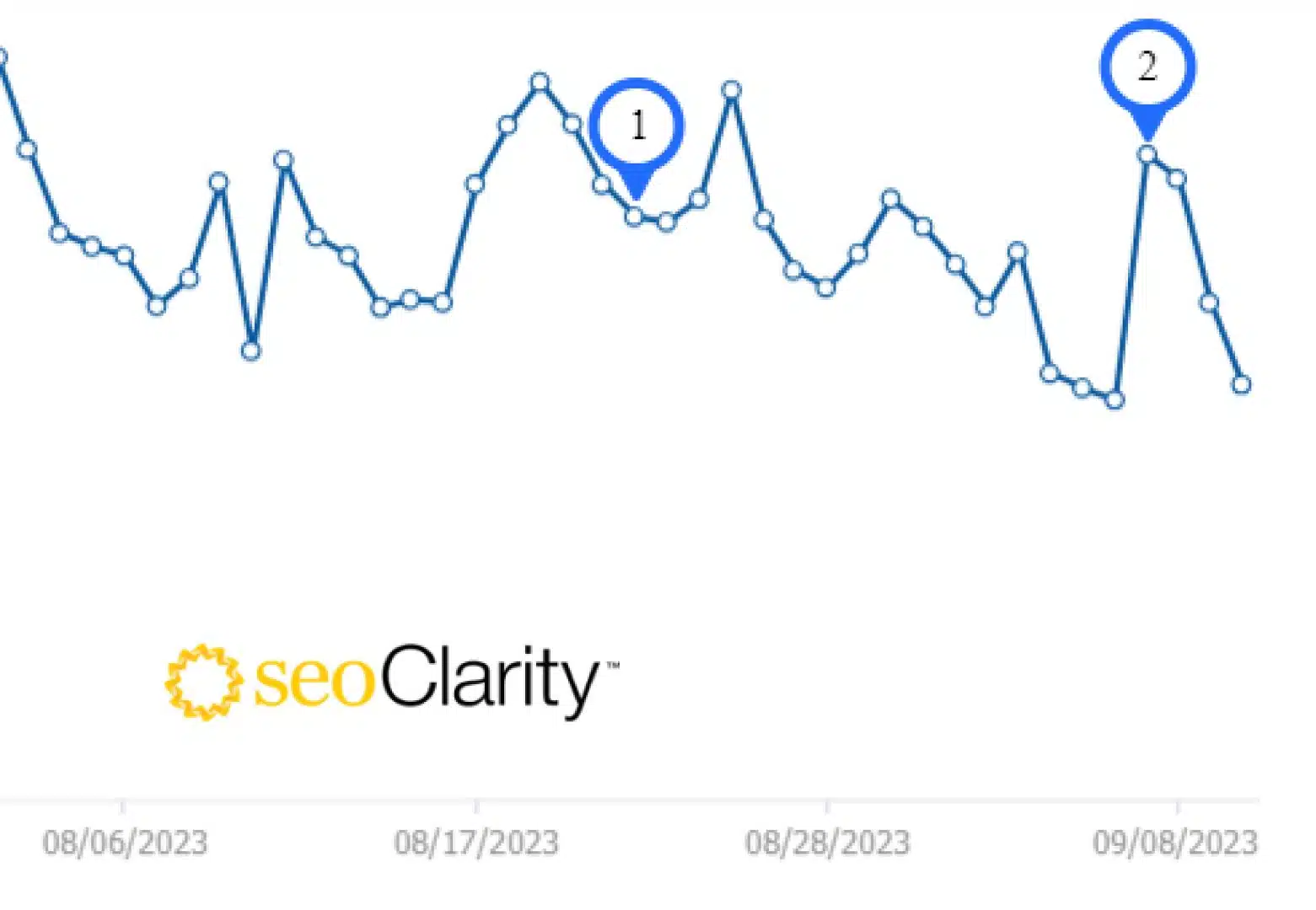
Here is another chart Mark sent me from their data set:

Sistrix. Steve Paine from Sistrix did its own analysis and told Search Engine Land, “Overall it was quite a quiet core update in comparison with others but there were stand-out losses and gains.” Here is a chart showing the volitlity over time from Sistrix’s data:
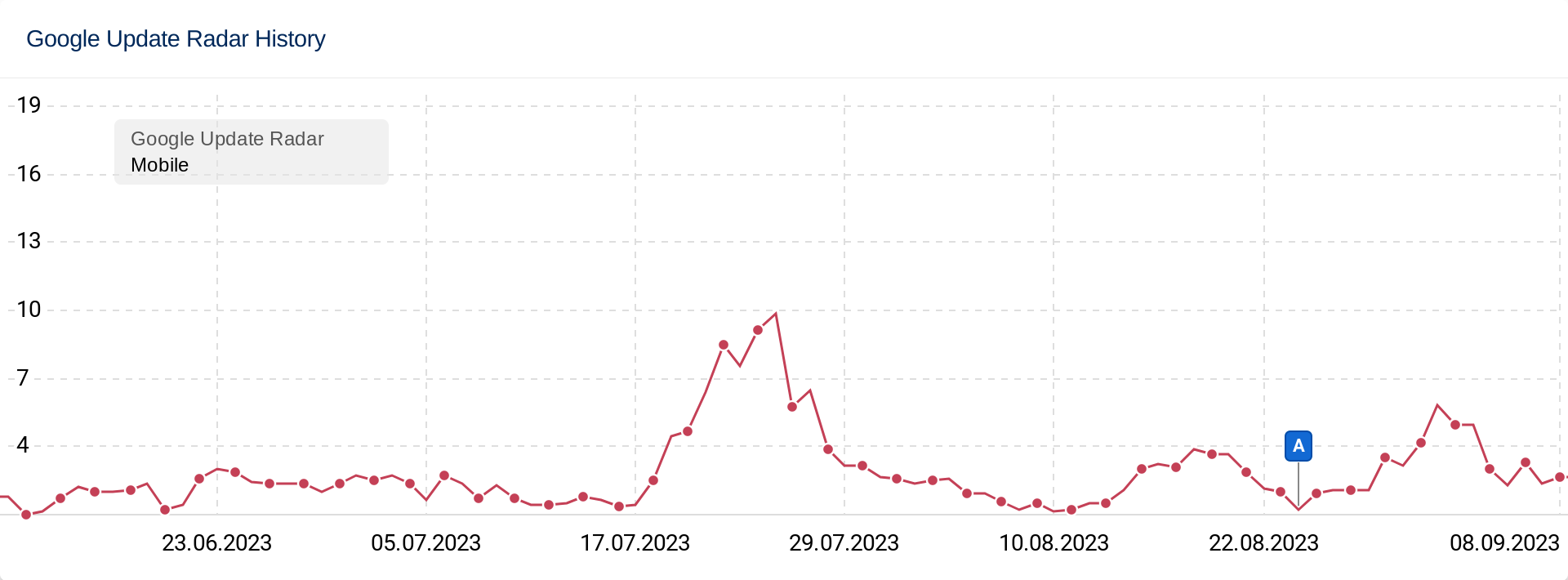
Steve Pain said, “The large peak seen during July in our Update Radar was never confirmed as an algorithm change by Google but, overall, had a much bigger effect on domain visibility than the August Core Update.”
Sistrix also provides the top winners and losers from these updates, the ones that saw the biggest visibility changes in their Google search rankings.
Top winners:
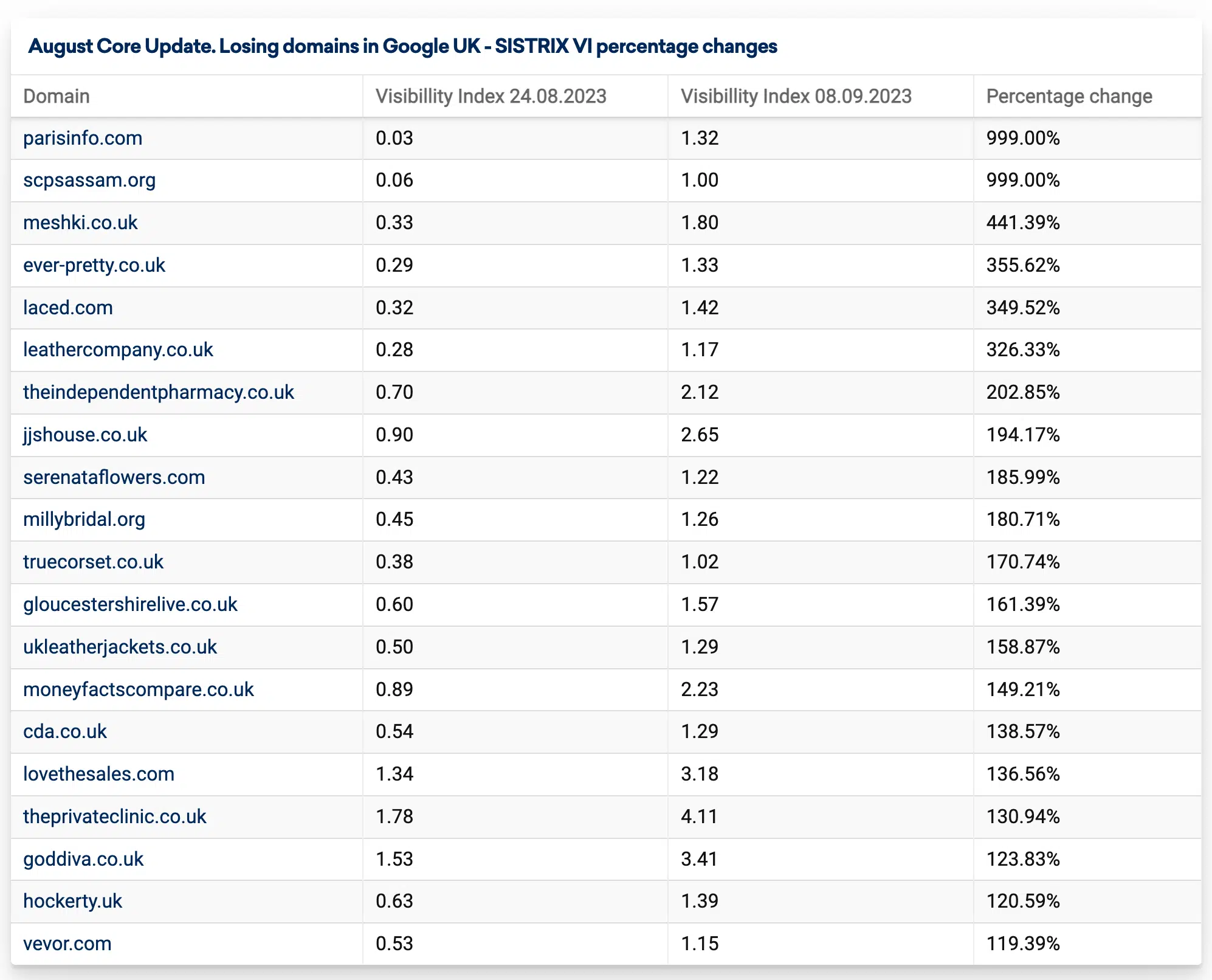
Top losers:

Moz. The folks at Moz picked up on the core update volatility as well. Mozcast documented the spikes ain volatility as well, as you can see from this screenshot:

Dr. Pete Meyers from Moz told us that they “saw peak flux on MozCast around August 23-24 (around 122°F).” “Core Updates are already multi-signal and a bit mysterious, and this one is even harder to disentangle than most,” he added.
More on the August 2023 core update
Community. On the Search Engine Roundtable, I did a bit of a roundup on what the community noticed across several different stories. The stories combined had about 500 comments including the slow start to the update, then the first big impact noticed on August 25th, then another tremor a few days after that, then the final wave arouund the day the update ended, of course, after it ended, some minor tremors.
Based on all I see from the community, this update was big but didn’t feel as heated because of the constant volatility we’ve been seeing across Google search for the past several months.
What to do if you are hit. Google has given advice on what to consider if you are negatively impacted by a core update in the past. There aren’t specific actions to take to recover, and in fact, a negative rankings impact may not signal anything is wrong with your pages. However, Google has offered a list of questions to consider if your site is hit by a core update. Google did say you can see a bit of a recovery between core updates but the biggest change you would see would be after another core update.
Why we care. It is often hard to isolate what you need to do to reverse any algorithmic hit your site may have seen. When it comes to Google core updates, it is even harder to do so. What this data and previous experience and advice has shown us is that these core updates are broad, wide and cover a lot of overall quality issues. The data above has reinforced this to be true. So, if your site was hit by a core update, it is often recommended to step back from it all, take a wider view of your overall website and see what you can do to improve the site overall.
Hopefully, your company and your clients did well with this update.
More on Google updates
You can read more of our coverage in Search Engine Land’s Google Algorithm Updates history.
Related stories
New on Search Engine Land